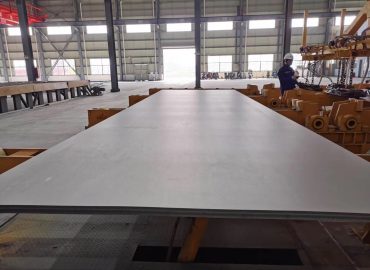is ASTM A36 steel hot rolled
China United iron and steel limited produce ASTM A36 steel sheets and steel plates. Our main products are ASTM A36 steel plate, ASTM A36 steel coil, ASTM A36 H Beam, ASTM A36 IPN, ASTM A36 UPN, ASTM A36 IPE, ASTM A36 round bar.
ASTM A36 steel targets
The attribute form of austenite is a face-centered cubic crystal structure. Visually, think about a cube with one molecule at each nook and a molecule within the middle of every side of the cube. The molecules in an austenite configuration are more densely packed than these of ferrite. Austenite can comprise as much as 2% carbon and is a standard microstructure of stainless-steel. When it comes to a wonderful combination of mechanical properties similar to tensile power, shear energy, toughness, hardness, and ductility, it is exhausting to beat carbon metal.
The low carbon also prevents warmth treatment from having much of an effect on A36 metal. A36 metal usually has small amounts of other alloying parts as nicely, together with manganese, sulfur, phosphorus, and silicon. These alloying components are added to give A36 steel its desired chemical and mechanical properties. Since A36 doesn’t contain large amounts of nickel or chromium, it does not have wonderful corrosion resistance. The ASTM A285 specification covers low to intermediate tensile energy carbon metal for use in non–critical stress vessel purposes.
High carbon steel is first heated above the higher important temperature. Then it is maintained, cooled to the decrease critical temperature, and maintained as soon as once more.
- This signifies that whereas most grades should have added alloys that match between sure percentages, A36 must meet specific mechanical standards.
- While there are some chemical composition necessities that A36 metal must adhere to, crucial characteristic is the yield strength requirement.
- For instance, metal bars and plates should have a minimal yield power of 36,000 pounds per sq. inch.
- Unlike most AISI grades such as 1018, 1141, or 4140, American Society for Testing and Materials A36 steel is not designated by chemical composition.
While there are some chemical composition necessities that A36 steel should adhere to, crucial attribute is the yield power requirement. Steel grading techniques consider chemical composition, remedy, and mechanical properties to allow fabricators to pick out the suitable product for their utility. Aside from the precise proportion of carbon and other alloys in the material, the microstructure also has a significant influence on the mechanical properties of steel.
This process ensures that the material reaches a uniform temperature and microstructure earlier than the following cooling step. It is necessary for metal producers and customers to understand the microstructure of metal and how it affects the mechanical properties of the material. Carbon content, alloy concentrations, and ending strategies all have an impact on the microstructure and may subsequently be used to manipulate the properties of the finished product.
Unlike most AISI grades corresponding to 1018, 1141, or 4140, American Society for Testing and Materials A36 steel is not designated by chemical composition. This signifies that while most grades should have added alloys that match between certain percentages, A36 must meet specific mechanical standards. For instance, metal bars and plates will need to have a minimal yield strength of 36,000 pounds per square inch.
ASTM A36 steel price per kg
When carbon steel is heated into the austenite vary—after which cooled with none alloy present to maintain the austenite shape—the microstructure reverts to the ferrite kind. However, if the carbon content is larger than 0.006%, the excess carbon atoms mix with iron to type a chemical compound referred to as iron carbide , also referred to as cementite. Cementite doesn’t occur on its own as a result of a number of the materials will stay in ferrite form. Low carbon steels are categorised by having less than 0.3% carbon by weight. This permits A36 metal to be easily machined, welded, and formed, making it extraordinarily useful as a general-function metal.
ASTM A36 metal bar inventory
It is feasible for 2 samples with the same alloy content to have totally different microstructures relying on the ending methods and heat remedies used. Austenite is a microstructure that is fashioned when iron based mostly alloys are heated above 1500˚F however below 1800˚F. If the proper alloy is present in the metal, such as nickel, the fabric will hold this microstructure even when cooled.

